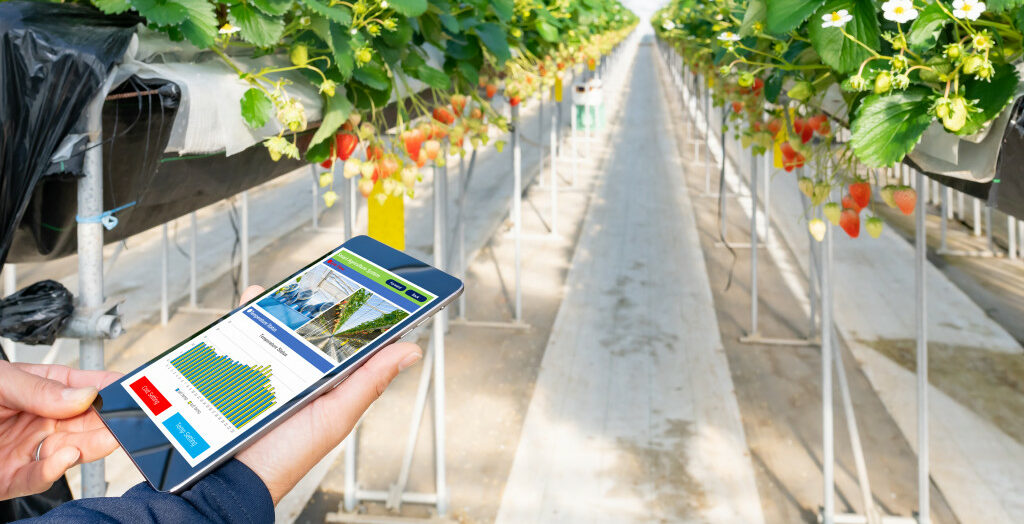Every industry has technological and digital upgrades because it is necessary to keep up with the times. It is present in every industry, even in a sector as traditional as agriculture. The agricultural industry has always been behind other sectors in technology, but this is changing. There are more and more companies dedicated to creating advancements for agricultural farms. Since it is a stable sector, it is a good investment.
The agricultural industry is essential because it provides the food that people eat. It is a $1 trillion industry in the United States alone. The global market value for agriculture is $3.2 trillion. The sector employs 1.3 billion people, about 18% of the world’s workforce. In the U.S., there are 2.1 million farms, which cover 922 million acres of land. The average farm size in the U.S. is 479 acres. Technology improves it further, and these aspects are among the most innovative features in modern agriculture.
Precision Agriculture
Precision agriculture is a farming management technique that uses information technology to help farmers manage crops and soil. Precision agriculture aims to improve the accuracy of inputs such as water, fertilizer, and pesticides. It uses sensors to collect data about the crops and the environment. This data can create models that help farmers decide how to manage their crops best.
Precision agriculture relies on three leading technologies: GPS, sensors, and mapping software. GPS receivers can track the location of equipment and crops. Meanwhile, sensors can collect data about the crops and the environment. Mapping software gets used to create data models to make better crop management decisions.
Failing to utilize precision agriculture nowadays would put farmers at a disadvantage. This technology can help farmers save money, time, and resources while increasing yields and crop quality.
The adoption of precision agriculture is slow because of the technology’s high cost and the lack of understanding about how it works. The average price of a precision agriculture system is $15,000 per farm. In the past, most precision agriculture systems get sold by large companies to wealthy farmers.
However, the cost of GPS receivers and sensors has dropped dramatically in recent years, making precision agriculture more affordable. Many small businesses now sell precision agriculture systems and services to farmers. It remains necessary to study how those technological advancements can work for your farm, so it might be better to research before investing in them.
Online Banking
Almost every other sector has some online presence, and the agricultural sector is no different. The agricultural industry was an early adopter of online banking. Online banking for agriculture first appeared in the late 1990s. Agricultural banks offer farmers various services, including online bill pay, account management, and mobile banking.
Online banking allows farmers to manage their accounts from anywhere. Farmers can check their account balances, transfer funds, and pay bills online. They can also use mobile apps to do these things from their smartphones. Online banking is convenient and saves time.
Farmers’ and merchants’ online banking services can help them save money. Online banking can help farmers get lower interest rates on loans and transaction fees. It can also help them track spending and budget better.
Some online banks offer special services for agricultural businesses. These include crop insurance, farm equipment financing, and agribusiness planning tools. Agricultural companies can use these services to manage risk and improve their bottom line.
Automated Farming Tools

Agriculture has always been a labor-focused industry, but technology is changing that. Farmers are using more automated farming tools to do the heavy lifting. These tools can plant, water, and harvest crops with minimal human intervention.
Automated farming tools help farmers with planting, watering, and harvesting tasks. These tools connect to a computer or mobile device, which does most of the work. Automated farming tools can make farming more efficient and reduce the need for labor.
Some automated farming tools are fundamental, such as automatic seed planters. Others are more complex, such as robots that milk cows. Studies expect the milking robots market to grow from $393 million in 2020 to $1.2 billion by 2025.
Automated farming tools are growing because they can help farmers save time and money. Automated farming tools can also help farmers reduce their reliance on manual labor. In some cases, automated farming tools can improve crop yields and quality.
The use of automated farming tools is controversial. Some people believe that automated farming tools will lead to job losses in the agricultural industry. Others believe that automated farming tools will make farming more efficient and allow farmers to produce more food with fewer resources.
Conclusion
Technological advancements are changing the agricultural industry. Farmers are adopting new technologies to save time, money, and resources. If you have a farming business, you should consider adopting some technologies to stay competitive.






